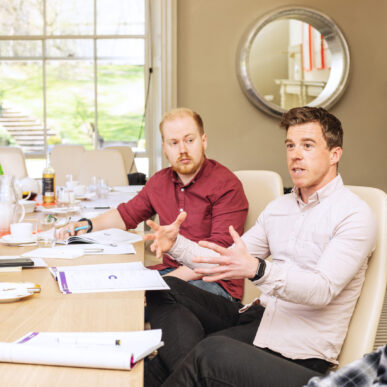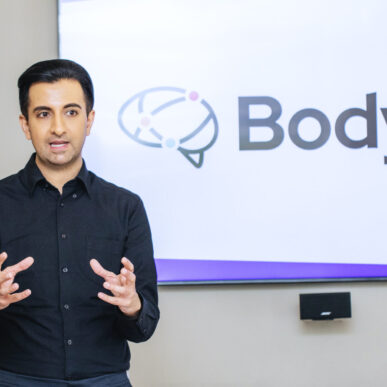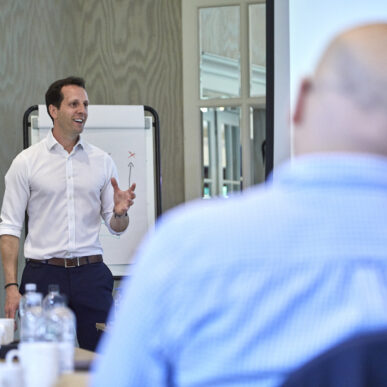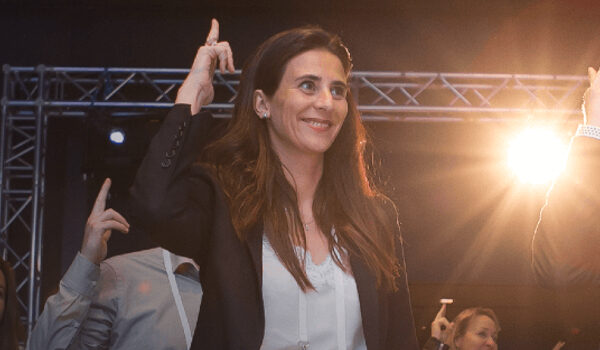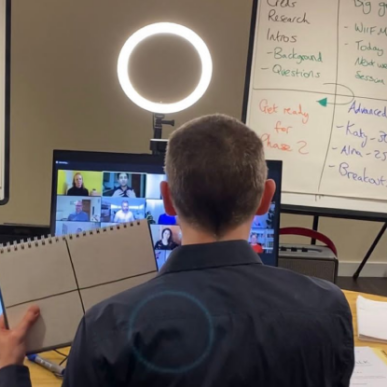A New Year Is Approaching
With 2025 approaching, it’s a great time to pause and reflect. What went well this year? Where could you improve? If you’re reading this blog, presentation skills might be on your list. Did you know that 70% of professionals see these skills as critical for career success, yet many feel unprepared or ineffective when presenting? You’re not alone in wanting to do better.
Strong presentation skills can make all the difference, whether your goal is to grow your business, advance your career, or communicate more effectively. The good news? You don’t have to carry bad presentation habits into the New Year.
Here are 10 common presentation pitfalls and how to avoid them in 2025.
1. Out: Monotonous Speaking
Have you ever sat through a presentation where the speaker’s tone never changes? It’s like listening to a lullaby, a surefire way to lose your audience, no matter how strong your content is.
In: Vocal Variety Think of a great song. Its emotional impact comes from changes in tone and rhythm. Your presentation can have the same effect by using three simple tools: pitch, pace, and projection. Drop your pitch and slow down for key points. Project your voice more to create more energy and volume. Notice how stand-up comedians use vocal variety to move from setup to punchline, it’s an art form worth emulating.
Action Step: Record yourself practising and experiment with varying your pitch and pace. Which parts stand out most?
2. Out: Filler Words
“Um,” “err,” and “like” may seem harmless, but they can undermine your credibility and distract your audience. These verbal crutches signal nervousness or unpreparedness.
In: Confident Pauses Instead of rushing to fill silence, embrace pauses. They give your audience time to absorb your message and make you appear composed. Practice speaking more slowly and deliberately. Remember, even seasoned speakers use pauses to command attention.
Action Step: Try to speak 10-15% slower than usual. You can do this by opening your mouth more, pronouncing words more clearly giving each letter its full value and putting in more pauses.
3. Out: Working Alone
If the first time you share your presentation is in front of an audience, nerves can take over, and it’s hard to gauge how your message lands.
In: Seeking Constructive Feedback Share your presentation with a trusted colleague or friend and ask for specific feedback. Questions like “What stood out?” and “What was missing?” can uncover areas for improvement. Recording yourself is another invaluable tool—you may notice distracting habits or unintentional movements that you can refine.
Action Step: Before your next presentation, practice in front of a colleague and ask them for one piece of constructive feedback.
4. Out: Relying on Words Alone
Words are important, but they’re only part of the equation. Relying solely on them misses the power of non-verbal communication.
In: Aligning Words and Actions Gestures, expressions, tone, posture, and eye contact all contribute to how your message is received. Imagine someone saying, “It’s great to meet you,” while crossing their arms and frowning, it’s confusing and off-putting. Be more aware of how your body language aligns with your words for maximum impact.
Action Step: Record yourself practising and watch for any disconnect between your words and body language.
5. Out: Too Much Information
You might know everything about your subject, but overloading your audience with complex jargon or excessive details risks losing their attention.
In: Clarity of Message Distill your presentation to its core message. What does your audience need to know? Additional data can be shared in a follow-up email or handout. Always keep your audience at the centre of your message.
Action Step: Write a one-sentence summary or headline of your presentation. Does everything in your talk support that summary?
6. Out: Slides as a Script
Slides packed with text are overwhelming and tempt presenters to read directly from them, losing connection with the audience.
In: Visual Aids that Enhance Your Story Use visuals that support your message rather than duplicating it. Strong, clear images and minimal text are key. If you need notes, use presenter mode or rely on a storytelling structure to stay on track.
Pro Tip: Check out Jen Bartram’s blog, “Are Your Slides Causing High Cognitive Load?” for more tips.
7. Out: One-Way Communication
Audiences don’t want to be talked at—they want to feel included and engaged.
In: Audience Connection Ask questions (even rhetorical ones), invite participation, or build in pauses to let your audience process what you’re saying. Engaging your audience creates a sense of collaboration and connection.
Action Step: Plan one interactive element for your next presentation. It could be a poll, an activity, or a simple question.
8. Out: Reciting Data
Data without context is forgettable. Your audience needs to understand why the data matters to them.
In: Telling a Story Stories make your presentation memorable and impactful. Position your audience as the hero and yourself as the mentor guiding them. Identify their challenges, their needs, and how your message helps them reach a better future.
Action Step: Frame your data points within a story. What’s the journey your audience is on, and how do these numbers help them?
9. Out: Staying the Same
A successful presentation for one audience won’t always resonate with another. Sticking to the same approach can lead to missed opportunities.
In: Adapting to Your Audience Tailor your presentation to the needs of your audience. Does this group need motivation, entertainment, or solutions? Adjust your tone, content, and delivery to meet them where they are.
Action Step: Before presenting, ask yourself: “What does this audience need from me?”
10. Out: Perfectionism
The fear of making mistakes can hold you back. But remember, great presenters grow through experience, not by being flawless.
In: Embracing Growth Adopt a growth mindset. Set goals, celebrate incremental improvements, and view challenges as opportunities to learn. Progress, not perfection, is the goal for 2025.
Pro Tip: Read my blog, “The Perfectionism Trap,” for more on overcoming the pressure to be perfect.
Let’s Leave Bad Presentation Habits Behind
The New Year is a chance for a fresh start. By identifying and addressing these habits, you can elevate your presentation skills and make 2025 your most impactful year yet. Ready to level up? Explore our resources and training solutions to ensure your next presentation is unforgettable!







